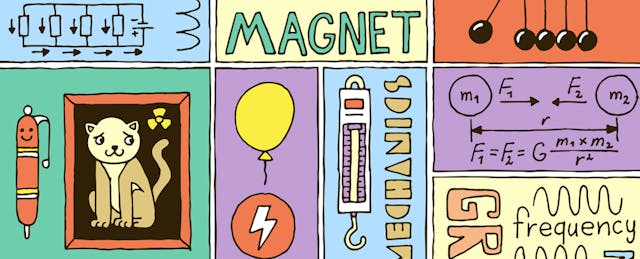In 1687, Sir Isaac Newton described his laws of universal gravitation and motion in Philosophiae Naturalis Principia Mathematica. While he was clearly contemplating something other than interactions between teachers and students, his Second Law (Law of Motion) posits that Force equals Mass times Acceleration (F = M x A).
With a generous bit of literary license, we can borrow from Sir Isaac and posit that in terms of student outcomes, Achievement equals Quality Instruction times Innovation (A = QI x I).
The impact of a good teacher is profound. It trumps just about every other variable influencing schooling. No one questions the significance of a skilled teacher who knows both their content and their kids well. Tracy Kidder, the Pulitzer Prize-winning author, wrote in 1990 that “Good teachers put snags in the river of children passing by, and over the years they redirect hundreds of lives.” I think that he got it right.
The role of innovative, effective instructional technology is similarly powerful. The kind of technology that deepens, rather than dilutes, the interaction between teachers and students, and students with each other, is transformative. Instructional technology expands the walls of the classroom and opens doors to information and experiences that would not be possible in its absence.
Both of these variables—good teachers and good technology—can transform a student’s learning experience. Each of them are also compromised by the absence of the other. The holy grail of instruction, then, seems to reside in the space occupied by teachers who know their content, know their kids, and know how to weave powerful technology into their instruction.
The frequency with which this combination occurs should not be a matter of chance, or be only the domain of dynamic outliers. Making this combination of variables the norm and not the exception in our classrooms, is the promise and opportunity of educational support provides.
The Innovation Matrix (iMatrix)
The Innovation Matrix below contemplates teaching along these two axes—instruction and innovation—which produce four quadrants that help us to better understand teachers. Understanding where teachers fit can help determine ways to differentiate professional development to move teachers towards mastery. Much like instruction, “one size fits all” professional development really doesn’t fit anyone.
The X axis maps teachers’ instructional skills and their depth of understanding of standards and capacity with a broad range of teaching strategies. Those who excel know their students well, understand them as individuals and are skillful at designing culturally relevant, engaging instruction for diverse learners.
The Y axis maps teachers’ skills at innovating through technology. The savviest of teachers will have a flexible and evolving knowledge of powerful tools, are comfortable in deploying them with students, and have a keen sense of when technology will deepen student learning.

Quadrant One: Innovator/Master Teacher
High Instructional Skill
High Innovation Skill/Mindset
Achieving Innovator/Master Teacher status is the goal for every teacher. These teachers are remarkable in their instructional skill and repertoire, content mastery, knowledge of their students and their needs, and are adept at personalizing learning and expanding the walls of the classroom through innovative application of technology.
Professional development and support for these teachers is critical. But too often, these teachers are left to their own devices (pun intended) by administrators who have to address more pressing needs from teachers in the other three quadrants. This is a mistake, as the nurturing and support of Master Teachers not only enhances their growth, but also signals something important systemically about where instructional priorities lie and what matters in a school.
Quadrant Two: Traditionalist
High Instructional Skill
Low Innovation Skill/Mindset
Traditionalists know their academic content and are effective in delivering traditional instruction, but are not comfortable or skilled with using instructional technology. Some of these teachers may simply not be convinced that it is the most useful means of moving students forward. Supporting this teacher is key as we want to build on their strengths.
The professional development opportunity with these teachers is centered around increasing their knowledge of powerful, proven innovations and tools. This also means providing peer coaching and modeling technologies that can be implemented in the broader context of instruction to personalize and deepen learning.
Quadrant Three: Technologist
Low Instructional Skill
High Innovation Skill/Mindset
Technologists are quite comfortable with a wide range of instructional technology tools and resources and deploy them consistently. What differentiates this teacher from the Innovator/Master Teacher is that their work is not grounded in mastery of content standards or impactful instructional strategies. Students may be engaged, but learning is hit-or-miss as the instruction occurs without a broader instructional framework.
Technologists needs support in building a strong curricular framework for their practice. They need to build knowledge of standards and a wide range of instructional methods into which they can thoughtfully weave technology-based solutions. This can happen though professional development, peer coaching, and supportive supervision.
Quadrant Four: Emergent
Low Instructional Skill
Low Innovation Skill/Mindset
The Emergent Teacher lacks facility along either axis. This teacher may be new to the profession or may simply experience challenges related to both axes and is often the focus of traditional improvement efforts.
The challenge is to provide the right intensive support, training and supervision that this teacher needs with allowing them to consume all of the support and development “oxygen” in the environment. It is too common to allow emergent teachers to be the sole focus of supervision and support, leaving those who are in the other quadrants (particularly master teachers) to their own devices, and this is a mistake. Providing just-in-time support while also assessing growth over time and providing appropriate supervision and evaluation are key to ensure that continual growth is underway.
“Men build too many walls, and not enough bridges,” Newton also wrote. Connecting quality instruction with quality innovation offers the potential to bridge gaps for our students so that acquiring a world-class education is less a matter of luck, but more a predictable outcome. And that starts with helping teachers create instructional experiences that are engaging, supporting and rigorous.


